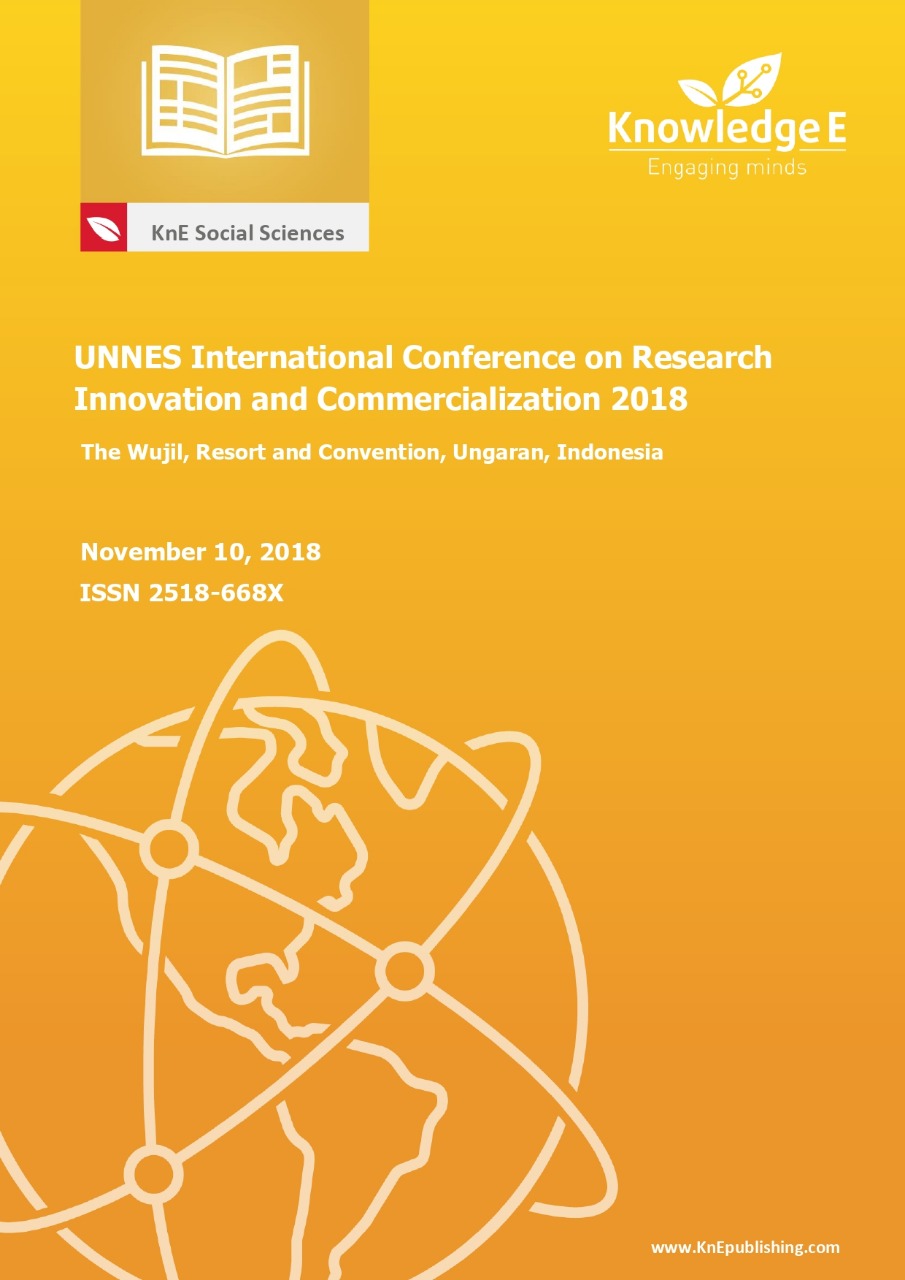Legibility Level of STEM Mobile Learning Package on Ecosystem
DOI:
https://doi.org/10.18502/kss.v3i18.4751Abstract
STEM in education has been discussed as an approach that enhances students to demonstrate their holistic knowledge in some projects given. Teacher could support STEM in learning process by providing students proper learning material such as learning environment, learning resources, and medias. This research aimed to test legibility level of texts uploaded on STEM Mobile Learning Package (STEM MLP) on ecosystem as one of students’ learning resources. Legibility level data was obtained from questionnaire from small scale test on 47 students. Data were analyzed descriptively by both qualitative and quantitative methods. The finding showed that legibilty level from students’ questionnaire ranged from 78,7 percent to 97 percent. In addition,FryGraphanalysisshowedthattextsinSTEMMLPwereinarea13
Keywords: legibility level, STEM, Mobile Learning
References
White, D. W. (2014). What is STEM education and why is it important. Florida Association of Teacher Educators Journal, 1(14), 1-9.
Y
Quinn, C. (2000). mLearning: mobile, wireless, In-Your-Pocket Learning. Line Zine. Retrieved from http://www/linezine.com/2.1/features/Cqmmwiyp.htm
Anih, E., & Nurhasanah, N. (2016). Legibility level of texts in the 2013 curriculum package book of 4 grade elementary school using formula grafik fry. JURNAL PGSD STKIP SUBANG, 1(2), 181-189.
Fadilah, R. (2016). Indonesian textbooks for middle and high school 2013 curriculum published by the ministry of education and culture 2014. Jurnal Pena Indonesia, 1(1), 26-49.
Jatnika, W. (2007). Legibility level of science discourse with Cloz technique. Jurnal Sosioteknologi, 6(10), 196-200.
Eskin, S., Bachnak, R., Wirick, D. (2018). Proceedings of the 2018 Conference for Industry and Education Collaboration. American Society for Engineering Education
Osman, K., Hiong, LC., Vembrianto, R. (2012). “21 st Century Biology: An Interdiciplinary Approach of Biology, Technology, Engieneering and Mathematic Education. 6th International Forum on Engieneering Education 2012 (IFEE-2012)”. Procedia Social and Behavioral Science. 102.(2013) 188- 194
Godhaber, D., Grat, T., Theobald, R. 2017. “What is in a teacher test? Assessing the relationship between teacher licensure test score and student STEM Achievement and course taking”.Economics of Education Review. 61 (2017) 112 -129
Thibaut, L., Knipprath, H., Dehaene, W., Depepe, F. 2018. “The influence of teachers’ attitudes and school context on instructional practices in integrted STEM Education”.Teaching and Teacher Education. 71 (2018) 190 -215.Journal hopage: www.Elsevieer.com/locate/tate
Dai, T, Cromley, JG. 2014. “Changes in implicit theories of ability in biology and dropout from STEM majors: A latent growth curve approach”.Contemporary Education Psychology.39 (2014) 233- 247
Hu, A., Hibel, J. (2015). “Where do STEM majors loose their advantage? Contextualizing horizontal stratification of higher education in urban china”. Research in Social Stragification and Mobility. Journal Homepage http//www.elseviarlcom/ locate//rssm

